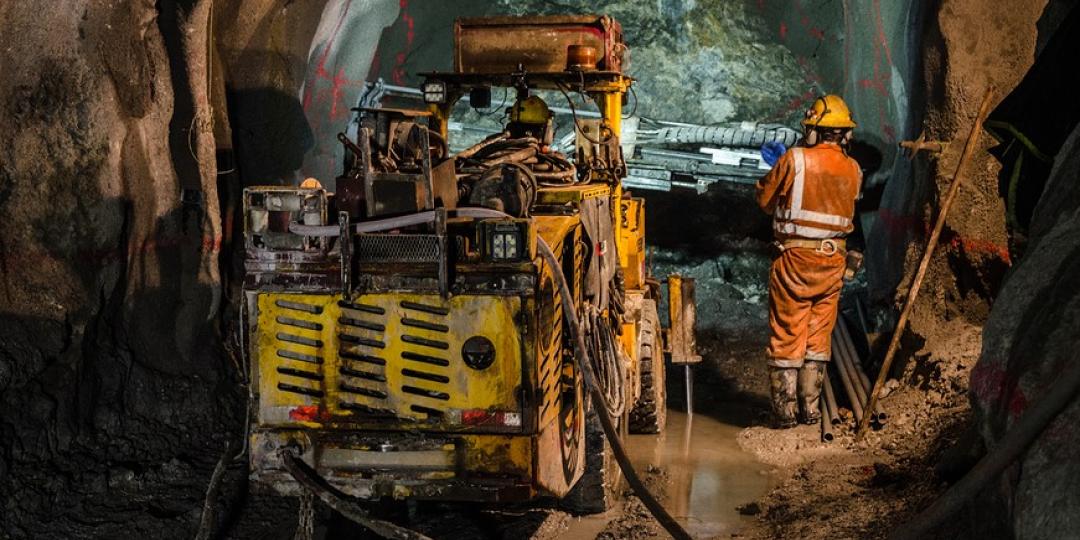By Marcel Bruyns, Sales Manager for Africa at Axis Communications
South Africa’s mining sector is on a journey to transform the country’s mines to guarantee the safety of its workers. In 2022, the industry reported the lowest-ever number of fatalities, with the largest contribution to its safety performance that year being a 70% decrease in the fall-of-ground (FOG) fatalities.[1] On the back of this, during the 2023 Mining Indaba, the Mineral Council South Africa and its members committed efforts to achieve “zero harm”. They were determined to continue working with labour and the Department of Mineral Resources to develop tangible plans to reach this goal.[2]
These are promising signs, as worker safety in mines has long been a challenge owing to the hazardous conditions and functions of the sector. It is in South Africa’s national interest, as well as that of the public and private sectors, that all options to ensure worker safety be considered. The first step is to consider the means and technology we use to make that a reality.
The dangers of mining
With substantial deposits of mineral resources, mining is critical for South Africa’s economic growth and prosperity. Minerals account for more than half of the country’s export revenues, while precious metals and stones, ores, slag and ash, and mineral fuels (such as coal) remain its top exports representing billions of Rands.[3] However, despite it being one of South Africa’s most critical industries, mining can be dangerous, especially for the people working on the ground and in the shafts.
Up to the end of June 2022, these were considered the leading causes of fatalities in the sector: ‘general’ (struck by, falling in, drowning, rolling rock, inundation, mud rush, burning and scalding), ‘other’ (electricity, fires, explosives, heat exhaustion, conveyancing, and miscellaneous), transportation and mining, machinery and FOG.[4] Meanwhile, injuries classified under ‘general’ were the biggest contributor to the overall number of injuries reported year-to-date.
While unforeseen accidents will always be a reality, mine operators are in a position to mitigate as many hazards as possible by installing solutions that help protect workers’ safety.
The role of video
A key component of any mining outfit is for operators to have adequate oversight of their staff, assets, and facilities. Every small issue has the potential to turn into a giant, costly incident. Whether it’s equipment failure, staff injury, environmental challenges, or criminal activity, operators must be positioned to see everything happening on their sites. Video surveillance allows them to do that.
We’re not just talking about a CCTV camera sending a live feed to a backroom somewhere. Innovations in video technology have given way to cutting-edge cameras and sensors that provide extensive coverage from several standpoints. For example, cameras enabled with infrared sensors can provide coverage in low-light conditions, such as mine shafts.[5] Onboard cameras placed on machinery and vehicles can improve operators’ awareness and, when equipped with thermal imaging capabilities, can improve drivers’ visibility when faced with obstructions or dust clouds. Image stabilisation technology also ensures that these devices are not impacted by vibrations and will provide consistently clear video quality.
Video surveillance can even be applied right down to the individual mine worker. With body-worn cameras, operators will soon be able to monitor activity in real time and use the footage for post-incident investigations. However, the goal is to prevent incidents. With the right deployments, operators can protect people by making sure they and other assets are where they’re supposed to be, alerting supervisors when they’re not. Advancements in video analytics and intelligence have also made it possible to identify and monitor behaviour patterns and trends. By capturing data and learning more about the operation, cameras and sensors can help officials make quicker and better decisions related to personnel safety.
From the perimeter inwards
Keeping mine workers safe also entails keeping the mine itself safe and secure. Strategically positioned along a fence or perimeter barrier, fixed thermal cameras can provide long-range coverage regardless of lighting conditions.[6] Those equipped with pan, tilt, and zoom capabilities offer an increased level of coverage and can focus on any unauthorised individuals or vehicles. And when paired with audio speakers and other devices, systems can trigger automatic responses to alert and deter unwanted parties.
But it’s not just about video coverage. A mine can have multiple entry points with hundreds if not thousands of staff members and vehicles passing in and out daily. Operators need to control access and can do that with solutions such as cameras equipped with license plate verification software, and intercoms and card readers installed on doors and gates. Access is further controlled from centralised locations thanks to software entry management
[1] https://www.mineralscouncil.org.za/industry-news/media-releases/2023?task=download.send&id=1994&catid=89&m=0
[2] https://www.mineralscouncil.org.za/industry-news/media-releases/2023?task=download.send&id=2000&catid=89&m=0
[4] Safety Performance in SA: The stats and the facts - African Mining Online
[5] Meeting mining’s challenges with video surveillance - Secure Insights (axis.com)


